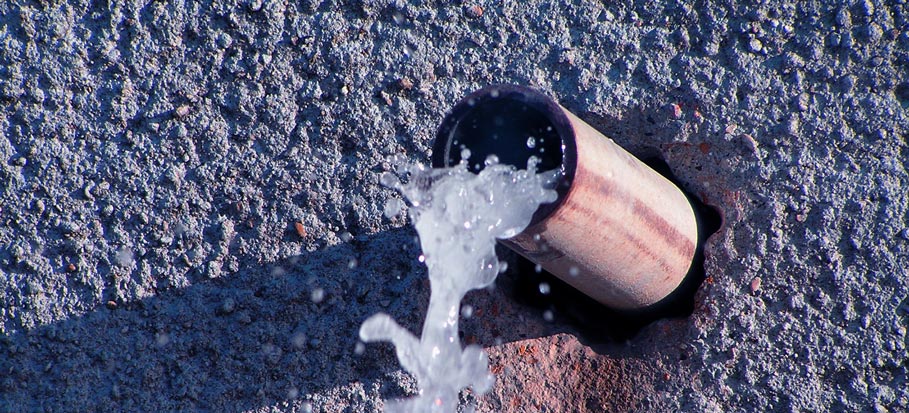Just how do you actually feel about Locating water leaks?

Early detection of dripping water lines can alleviate a possible calamity. Besides saving you money, it will reduce the irritation and stress. The minute you discover a leakage, calling your plumber for fixings is the most effective solution. Nevertheless, some tiny water leakages may not show up. If you can not detect it with your nude eyes, below are some hacks that aid.
1. Analyze the Water Meter
Every house has a water meter. Inspecting it is a surefire manner in which helps you find leakages. For beginners, shut off all the water sources. Ensure no one will certainly flush, utilize the tap, shower, run the washing machine or dishwasher. From there, most likely to the meter and watch if it will certainly change. Considering that no one is using it, there ought to be no activities. If it relocates, that indicates a fast-moving leak. If you discover no adjustments, wait an hour or 2 and also examine back once more. This suggests you might have a slow leak that might also be underground.
2. Inspect Water Usage
If you detect unexpected adjustments, in spite of your consumption being the same, it implies that you have leaks in your plumbing system. A sudden spike in your expense suggests a fast-moving leakage.
At the same time, a stable rise every month, even with the same practices, shows you have a sluggish leakage that's also gradually rising. Call a plumber to completely inspect your home, particularly if you really feel a cozy location on your flooring with piping underneath.
3. Do a Food Coloring Examination
When it comes to water intake, 30% comes from bathrooms. If the shade somehow infiltrates your dish during that time without flushing, there's a leakage in between the tank and also bowl.
4. Asses Exterior Lines
Don't forget to examine your outside water lines too. Needs to water permeate out of the link, you have a loose rubber gasket. One little leak can throw away bunches of water as well as spike your water costs.
5. Examine and also Evaluate the Scenario
Homeowners need to make it a practice to examine under the sink counters and even inside cabinets for any bad odor or mold development. These 2 warnings indicate a leak so punctual interest is needed. Doing routine evaluations, even bi-annually, can save you from a major issue.
Inspect for discolorations and also weakening as the majority of pipelines and home appliances have a life expectancy. If you suspect dripping water lines in your plumbing system, don't wait for it to rise.
Early discovery of leaking water lines can alleviate a possible catastrophe. Some tiny water leakages may not be noticeable. Examining it is a surefire method that assists you uncover leakages. One tiny leak can squander bunches of water as well as surge your water costs.
If you think dripping water lines in your plumbing system, don't wait for it to rise.
How to Know If Your Home Has a Hidden Leak
Water Meter Reveals Inexplicable Water Usage
If you’d like to test whether or not there’s a leak somewhere in your home, you can do this using your water meter. Here is how to conduct the test:
Don’t use any water in your home for at least 30 minutes; this also means not turning on faucets or water-using appliances.
Go outside, and check your water meter for activity.
If your water meter shows that there was activity, even though no one was using any water, this proves that there is a leak in your home.Visible Mold or Mildew Growth
Leaks behind walls create moist, dark environments that allow mold and mildew to grow and thrive. Eventually, you might see mold growth forming on the wall closest to a hidden leak.
If mold is growing in an area that receives a high amount of moisture, such as a bathroom, it may simply be an indication that better ventilation is needed. However, if you see mold growth on a wall or the ceiling in an area where you would not expect, you probably have a hidden leak.
Musty, Mildew Odor
Sometimes you might not be able to see the mold or mildew that is growing as a result of a leak. However, the smell can give the problem away just as easily. If you catch a whiff of something musty, there’s a good chance that old water is collecting somewhere in your home that you can’t see.
Stained/Warped Walls, Ceilings, or Floors
When your home soaks up water, a variety of red flags can become visible, including ceiling stains, bubbling drywall, warped walls, and sagging floors. While these issues can be caused by excess humidity, they can also be signs that a pipe or plumbing connection has started leaking behind your walls.
Inexplicably High Water Bill
After a while, you get a general sense for what your water bill should be. If you own a pool or sprinkler system, your bill will tend to be higher during summer. However, if you receive a water bill that seems especially high, and you can’t figure out what caused it, then you may have a hidden leak somewhere that’s increasing your bill.
https://www.plumbingjoint.com/blog/2019/july/how-to-know-if-your-home-has-a-hidden-leak/

I stumbled upon that blog entry about Detecting hidden plumbing leaks while doing a search on the web. Are you aware of somebody who is in the market for the topic? Why not share it. Thanks a lot for going through it.
Plumbing challenges? Professional solutions await.